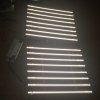Mak'er Grow
Well-Known Member
Been using some DIY lights I made awhile back...they work fine, but I deal with heat problems in the summer months.
Anyways I figure its time to update with some strips, but after reading a bunch of posts I'm not sure what the 'now' strips are and are they worth the extra $?
What would you purchase if you could?
Also is it better to run CC or CV drivers?
Any info welcomed...been reading, but like always I end up learning how to teach elephants sign language and totally off topic...so I'm hoping to get combined info.
I have a couple designs...thoughts...
1- 8 x 2' strips x 2...so 16 total on 1 driver or 2.
2- 8-10 x 1' strips x 3...so 24-30 on 1 or 3 drivers.
or something like this.
Thanks
Oh and the biggest pain in the ass part...I live in Canada so got to order in country or pay a ton which makes it not really worth doing...so Can links please.
Anyways I figure its time to update with some strips, but after reading a bunch of posts I'm not sure what the 'now' strips are and are they worth the extra $?
What would you purchase if you could?
Also is it better to run CC or CV drivers?
Any info welcomed...been reading, but like always I end up learning how to teach elephants sign language and totally off topic...so I'm hoping to get combined info.
I have a couple designs...thoughts...
1- 8 x 2' strips x 2...so 16 total on 1 driver or 2.
2- 8-10 x 1' strips x 3...so 24-30 on 1 or 3 drivers.
or something like this.
Thanks
Oh and the biggest pain in the ass part...I live in Canada so got to order in country or pay a ton which makes it not really worth doing...so Can links please.


